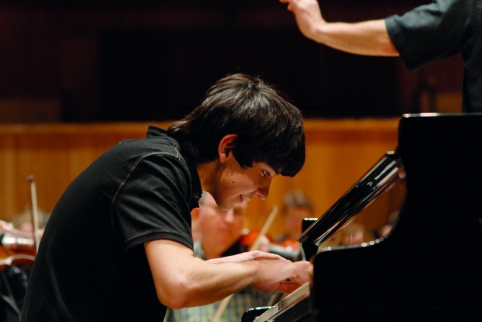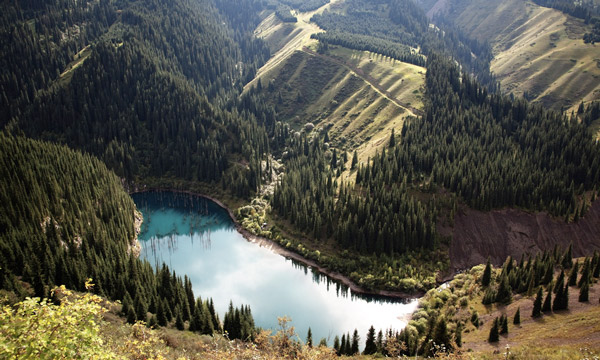Peter Fleming’s News from Tartary about a journey through Xining and Xinjiang in the 1930s is a travel favourite of mine and so I’m pleased to see it back in print in a special edition thanks to the Queen Anne Press (www.queenannepress.com). Beautifully bound just like the original, but with the addition of expedition map endpapers and a foreword by Fleming’s daughter, Kate Grimond, the edition is limited to 150 copies – a tangible treat in our digital world. Continue reading News from Tartary – Peter Fleming
All posts by Lucy Kelaart
Classic FM Live – Behzod Abduraimov
Good news coming out of Uzbekistan is pretty rare these days. Last night it came in the form of Behzod Abduraimov, a young pianist from Tashkent, who played Tchaikovsky’s Piano Concerto No. 1 at Classic FM Live at the Royal Albert Hall. My goodness it was exciting. When he walked on to the stage he seemed so young. At just 21 years old – he is. He hung over the piano like a small schoolboy concentrating intensely, and highly enthusiastically, on his homework (see the picture above). Continue reading Classic FM Live – Behzod Abduraimov
Travel Local
An old friend of ours here at Steppe recently launched Travel Local – a site set up to allow travellers from anywhere in the world to book their trip through a locally owned company in their destination, and to do so with complete confidence (payments are 100% protected). For the traveller it means cheaper, high quality trips and for local companies it allows a greater share in the tourism revenue and, I suspect, a more heightened interest in ensuring that everything goes completely to plan. Continue reading Travel Local
Alexander Burnes: Travels into Bokhara
Eland Books have just launched a beautifully edited edition of Alexander Burnes’ Travels into Bokhara. When the original was published in 1835, Burnes became an overnight sensation, lecturing to packed halls in London and even given an audience by the King. At the tender age of 26, Burnes travelled into the unknown territories to the northwest of the British empire in India, reaching as far as Bokhara in modern-day Uzbekistan. Dressed as a local and in command of the local languages, the brilliant Burnes reported back on the geography and politics of the region, right at the beginning of what later became known as the Great Game between the British and Russian empires. Continue reading Alexander Burnes: Travels into Bokhara
Turkmen Carpets
I recently reviewed a book on Turkmen carpets for Selvedge Magazine’s winter issue. These carpets are quite spectacular when you stop awhile and appreciate them.

Turkmen Carpets: Masterpieces of Steppe Art, from 16th to 19th Centuries – The Hoffmeister Collection. Arnoldsche Art Publishers, 2011, $95
Peter Hoffmeister’s first encounter with a Turkmen carpet in the early 1970s, whilst searching for beautiful things to furnish his home, struck a chord with his “sense of great art to the full”. During the ensuing forty years he has collected these textiles with a passion, inspired by their beauty, their nomadic creators and the historical roots of their design.
The excellent, high-quality photographs in this book allow you to get a real appreciation of these carpets. Spend time pouring over any of the images and it is hard not to become absorbed by the stylised geometric tribal emblems or göl at the heart of the Turkmen carpet. The book’s author, Dr Elena Tsareva, head of textile research at the Kuntskamera Museum in St Petersburg and an expert on Central Asian textiles, reinforces this feeling, describing how “Ornaments and colours are among the most ‘talkative’ of ‘visual texts’, serving as a kind of lingua franca able to carry age-old messages, irrespective of when and by whom they were created.”
In a departure from other books on the subject – and there are a large number – her text takes the form of twelve stories, some applying a broad brush, others deeply focused, with subjects ranging from the carpets of different tribes to a particular type of knot. Throughout, the book is tinged with a certain kind of magic, although I can’t put my finger on whether that is a result of the passionate eye of the collector, the profound and interesting knowledge of the author, the carpets themselves – everyday usable repositories of tradition, lore and pure beauty in a sandy, desert world – or a combination of all three.



